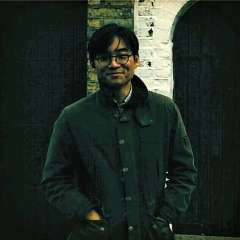London Philharmonic Orchestra’s traverse into the variegated works of Stravinsky this year took the form of their principal conductor Vladimir Jurowski starting the concert with the Neoclassical masterpiece, Symphony in C. From the start of the symphony, the well-defined strings explored the various contours, the mood always lively if not playful – yet rarely without a certain weight of intent. Stravinsky being Stravinsky, significant roles are endowed to all major instruments, so it was never to be an easy evening for the principal trumpet, yet save for a few mis-blows the entire brass section had a tinge of elegance in its meaty presence. The woodwinds were lilting in the Larghetto concertante, but the highlight lay in the finale, a feast where the strings came in layers one after another, all in great strength and in their own distinct qualities of sinew.
Jurowski’s liking for putting rarely played works on stage was evinced in the next two pieces, Stravinsky’s danceful miniature, Tango, and Debussy’s Fantaisie, for piano and orchestra. Tango, in its unusual instrumental makeup incorporating a sextet of strings (one double bass, three violins, one viola and one cello), classical guitar, woodwinds and a rather substantial brass section, was a classic realization of the composer’s inventiveness and adaptability to differing genres. Still, there was little doubt of Stravinsky’s own voice, as the music bounced and itched on the quaint background of a melancholic tango tune.
In contrast, the 1968 version of Debussy’s Fantaisie, for piano and orchestra – around 4 measures shorter than the often-played original version – had a Romantic sweep alien to the two preceding variants of Stravinsky’s quirky art. One could say that the sheer enthusiasm of the orchestral playing, as sumptuous as it was, somewhat overshadowed the presence of Leif Ove Andsnes in the Andante ma non troppo. Yet the spirit of the playing was clearly there, and with the introduction of Lento e molto espressivo, a soft kind of grandeur swelled upon the stage with Andsnes reveling with his characteristic clarity and weight. Against the stoic and proper outwardness of Andsnes, the exotic flair of the Allegro molto had flexibility, and the triumphant conclusion linked well with the encore, a revisit to the offbeat dance of Stravinsky’s Tango in piano reduction form.
Despite Shostakovich’s Sixth Symphony lasting around half an hour, dedicating the second half of the concert to the symphony turned out an immaculate decision. No more of the niceties of C major endings, dance-like tunes of a tango or the dream-like contentment of French Impressionism: the self-destructive corrosiveness of Shostakovich’s symphony, as if to foretell the socio-political tumult of the mid-20th century, presented a world of desolation, brutality, and sardonic wit. Jurowski met the spirit of the work with a full-blooded reading with little compromise. Rarely have the LPO’s strings been so concentrated in white heat, and the flute of Juliette Bausor was as beautiful as it was ironic. Talking of irony, the Allegro that followed was a canvas of contrast between rumination and bleak climaxes, and the ulterior motif behind the optimism of the Presto was all too palpable in the frenzied wit of the gallop. Surely then, my concert of the year so far.
An earlier version of this review incorrectly named Paul Beniston as the solo trumpet player for Stravinsky's Symphony in C.


